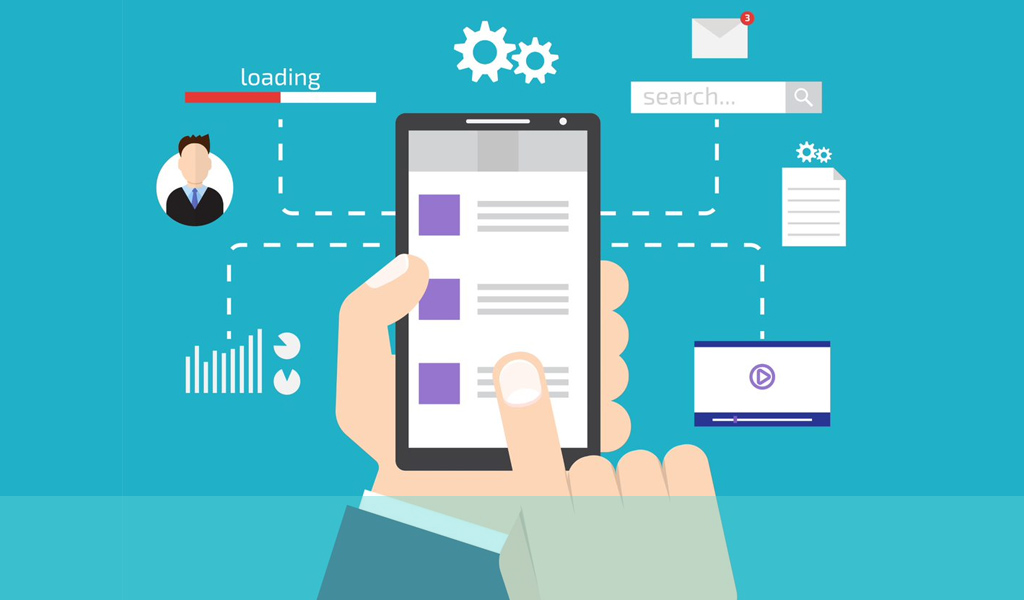
When you first think about storming the market with your big idea, the typical instinct is visualising the ideal route to the perfect outcome. However, as we’re all built in different ways, live very different lives, and operate under very different sets of social and coping strategies, what one person may believe standard and typical could be riddled with issues that their positive bias simply refuses to consider.
UX research creates an ideal opportunity to ask a range of users about all the things we might miss from being too close to our products and our interpretations of who we think they are—however aware and pragmatic we believe we are.
To really get inside someone’s head—and not just anyone’s; those of our users—we need to see things from their viewpoint, and to refine their experience, we need to know how they feel about how it delivers.
That takes empathy, which leads us to today’s question; what tools do we use, as UX researchers, to encourage empathy and align our product development with our customers’ most significant needs and frustrations?
One of the most valuable tools in this area is the journey map.
The journey map definition
“A customer journey map is a visual storyline that shows the actions or steps of engagement a customer has with a service, brand, or product, usually to achieve a desired goal.”
The journey isn’t necessarily digital; journey maps work equally well in physical environments and retail spaces. As long as they tell the user’s story in a way that represents their feelings and emotions over the various steps, they have just as much relevance in online and offline situations.
How does a journey map work?
A journey map (or UX service map) explores your user’s steps to reach our predefined goals. In our minds, it’s a simple process, but through research and analysis, we start to see where the journey falls down, where users are frustrated, and equally, where we’re getting it right and where they’re delighted.
This illustration can be redesigned to eliminate the pain points of each step, moving closer to the ideal customer journey we anticipated when we set off on our product-path adventure.
The best journeys seamlessly balance business and user goals, ensuring everyone is happy with the end result and how they got there.
What a journey map includes
Journey maps don’t come in one standard shape, size, and fit. They can be digital, physical, interactive, storyboards, tables, card sets, and everything in between. There’s no set standard for features and elements either, although most follow a format that includes most of the following items.
User profiling and personas
When reading a book or watching a movie, becoming emotionally involved with its characters requires a backstory to paint a clear picture of how they are most likely to react and feel.
A journey map is no different. By exploring each type of user engaging with our product, we see how each feels while interacting with the various features. Your initial journey maps should be built around your most typical customer persona, adapting other versions to cater for regularly occurring alternative characters.
Emotions – thoughts, feelings, and inspirations
The empathy we need to uncover through this storytelling can only be determined by understanding our users’ thoughts and feelings. Their emotional state relays how affected they are during particular processes and the depth of their joy or frustration.
Representing those visually, using a journey map, makes it far easier for developers and designers to understand the extent of the issue.
Scenarios and scope
A persona without a scenario can be like a fish out of water. We’re all products of our environments, so envisaging how our users act and feel operating in different situations lays out visualisations of their variations in moods and feelings. For example, it could be someone using your product at home, in a relaxed and safe environment, or using it on the fly, travelling from A to B under all kinds of external pressures.
Scope caters to which parts of your product’s system you’re mapping. For example, you may explore the entire user journey, a segment, or a single feature. Clarifying which parts of your process are relative to your goals can narrow down the crucial areas requiring your focus.
A timeline
Whether it’s a week or a year, your journey map needs to be contained. Your users will likely go through several phases at different times or touchpoints, experiencing alternative emotions at each.
A phase could be how long it takes to complete a purchase, learn how to use a new feature, or how an app operation changes over several months. Feelings rarely stay neutral, and engagement levels and emotions become objective usability factors.
Touchpoints and channels
Every interaction on a website, app, or activity is a touchpoint, and the platform, feature, or place it can happen becomes a channel. So, again, understanding how users feel when engaging in particular channels (e.g., customer services, payment gateways, navigation systems, or even content layouts) provides scope to rectify problem areas, evolving each into more accessible and pleasurable to use solutions.
Motivations, pain points, and lightbulb moments
When our users are excited about a feature or action, it indicates that element’s success. Alternatively, pain points uncover where we need to be stronger, perhaps simpler or more straightforward. And those lightbulb moments our users’ experience show us where we hit the mark but could have done it better.

How to build a journey map
Determine and define your goals
Goals come first. Without them, you’re mapping for the sake of it instead of exploring how your users feel about the various functions of your product and the challenges they face.
Explore the problems you need to solve and then build the journey your users will face.
Do your research
We’ve spoken about the importance of UX research in journey mapping (insert link here to the other new journey mapping piece), so it’s an excellent time to dig into any existing data you already have to hand, for example, customer records, reviews, social tracking, customer service records, complaints, etc. From there, you can consider what types of new research will be most advantageous specific to your latest project (user interviews, field studies, observation, monitoring, and analysis).
Build your user personas
Using your research, you can paint a picture of your most typical users and create persona profiles for each type. Each one will have a different journey map, as they’ll have different needs and ways of operating.
Touchpoint and channel analysis
Every interaction point on the journey offers possibilities for pleasure and pain points. Each needs examining to understand how your users feel about them and what you can do to improve your weakest areas. Make a list to ensure nothing is overlooked—from social media, customer contact channels, websites, apps, and the features within those platforms.
Empathy analysis
An empathy map helps to picture how users feel during scenarios and actions. It helps to uncover a deeper observation of your users’ experience. The goal is to understand what they feel and think about what they see and hear, their reactions to what people are saying, and how they behave.
Lay out the journey so far
Whether it’s with cards, sketches, flow charts, or Venn diagrams, either physical or digital, interactive or interchangeable, building early versions of your journey maps, including your timelines, personas, touchpoints, channels, associated emotions, and everything else you’ve uncovered, creates the first version of the tool you’re going to use to enhance your process.
From there, you can refine all the areas that bring up new questions, polishing your initial findings into something nearer what your research was designed to achieve.
Polish and produce the end model
With a final version emerging from your hard work and efforts, it’s time to add the last layer of polish to produce a final product. Simple structures are relatively straightforward, but it’s well worth considering a visual designer to bring out the essential features and create a balance that delivers the emotions you need to feel from the outset.
Use it
Well done for getting this far, but don’t get carried away congratulating yourself and your team on a job well done—it’s time to implement all the necessary changes, ensuring your current customer experience matches your new customer journey map.
Revisit and refine
As with every evolving product, it’s essential to revisit your new user journey maps over time to ensure they’re still providing the best possible journey and monitor whether any new pain points have appeared or resulted from the changes.
Conclusion
Journey mapping provides a formidable representation of your customer experience, putting yourself in their shoes to better understand how you can do your job better for them and, in turn, boost your bottom line.
It’s an incredibly valuable tool for product owners, managers, designers, and developers. However, if it’s not part of your current design strategy, perhaps it’s time to consider all their benefits to your operations.
If you would like to know more about user journey mapping, get in touch with us at hello@ux247.com.


